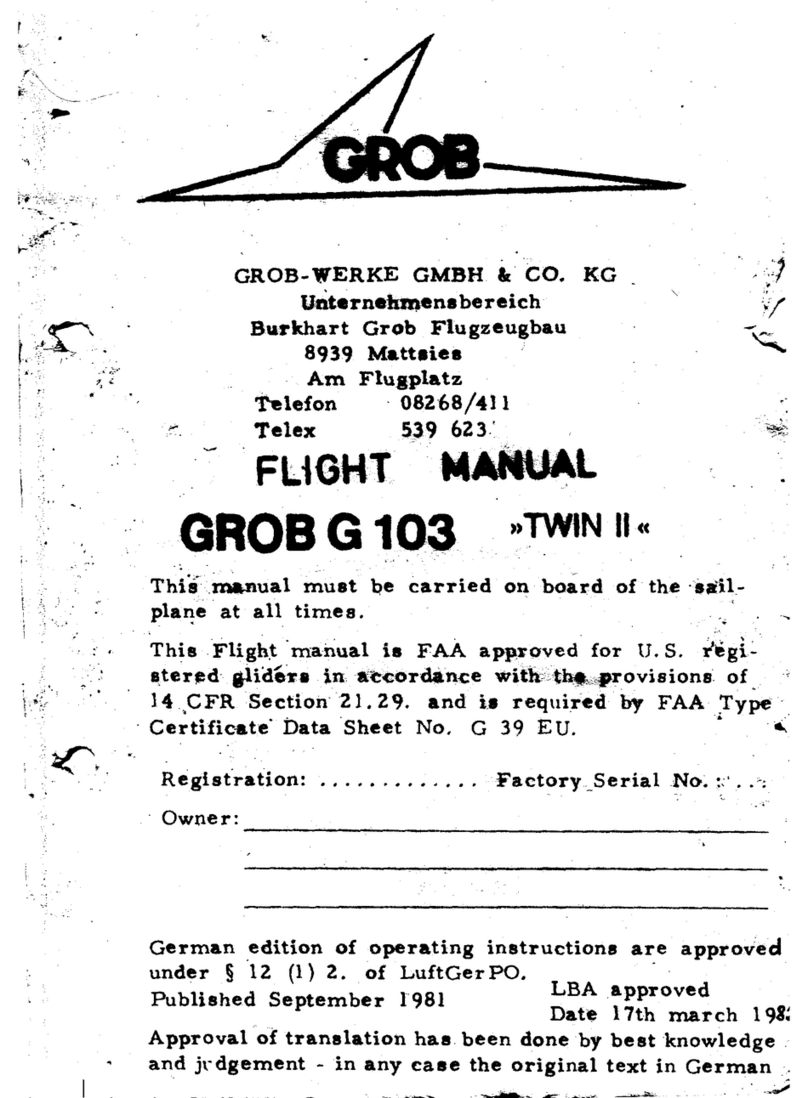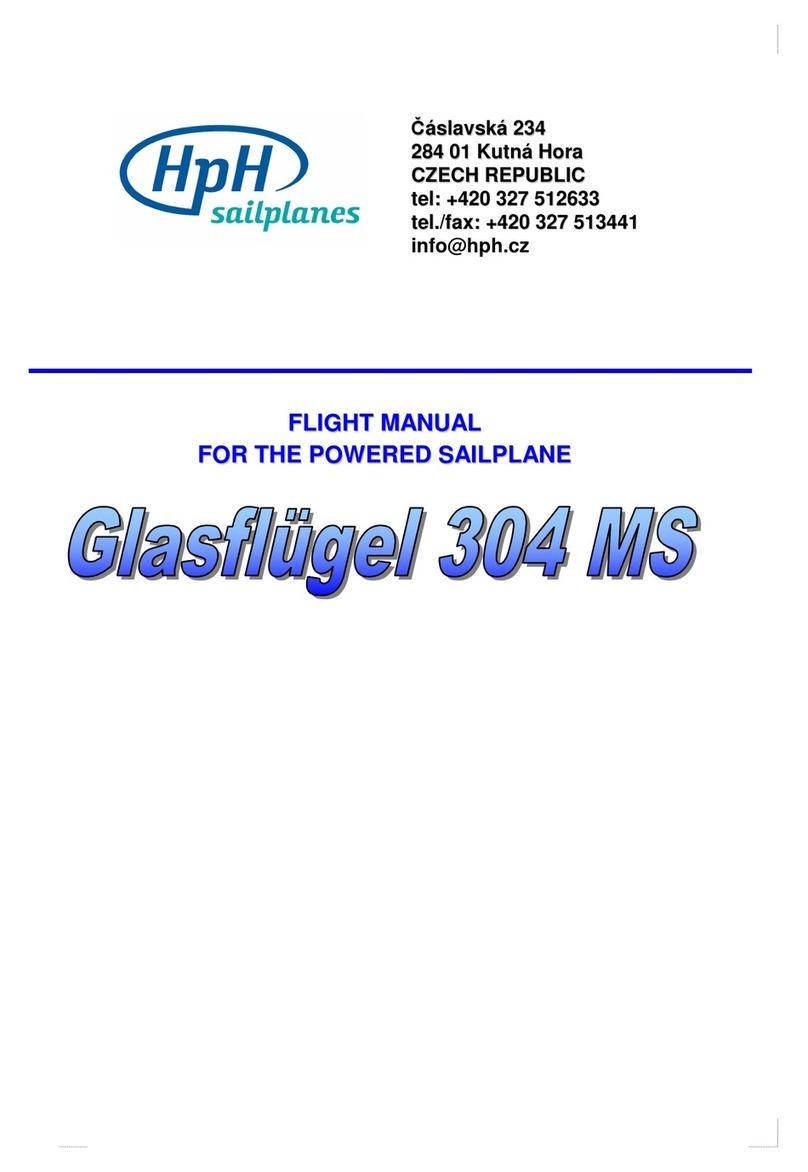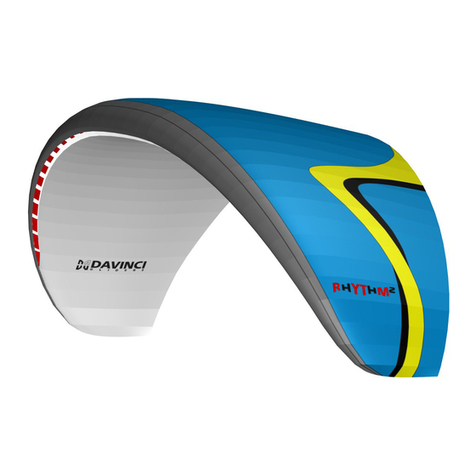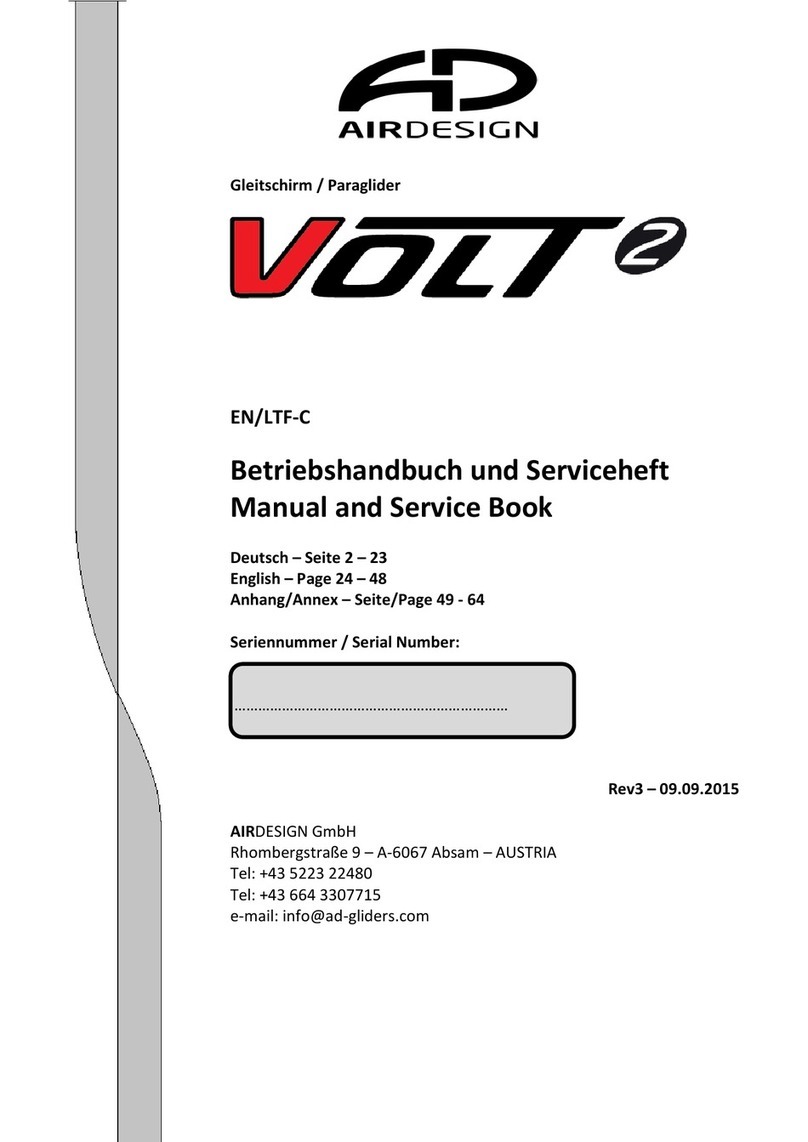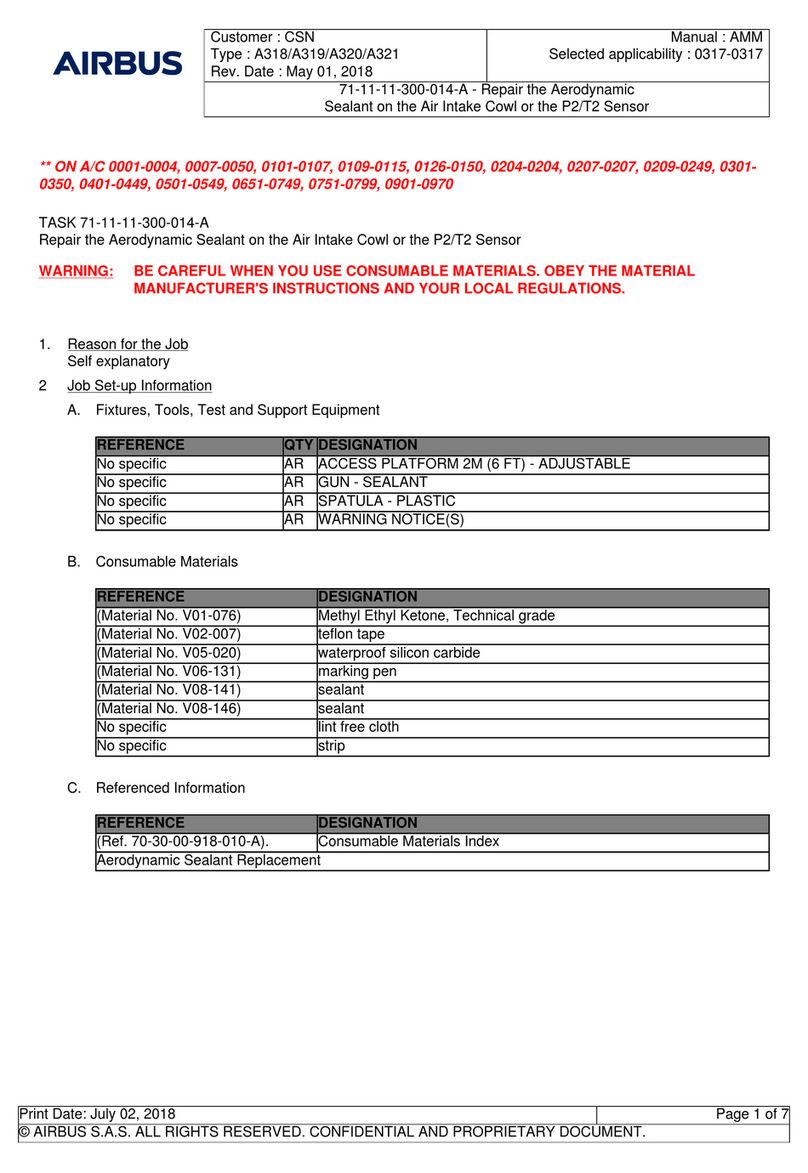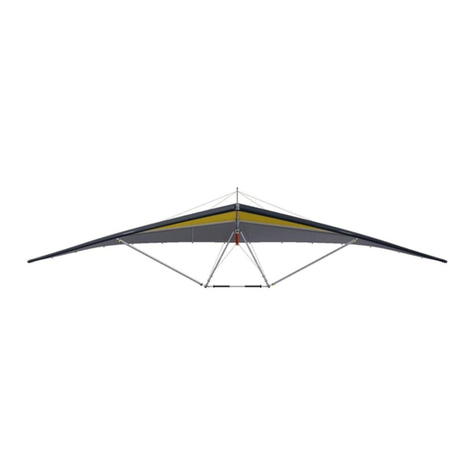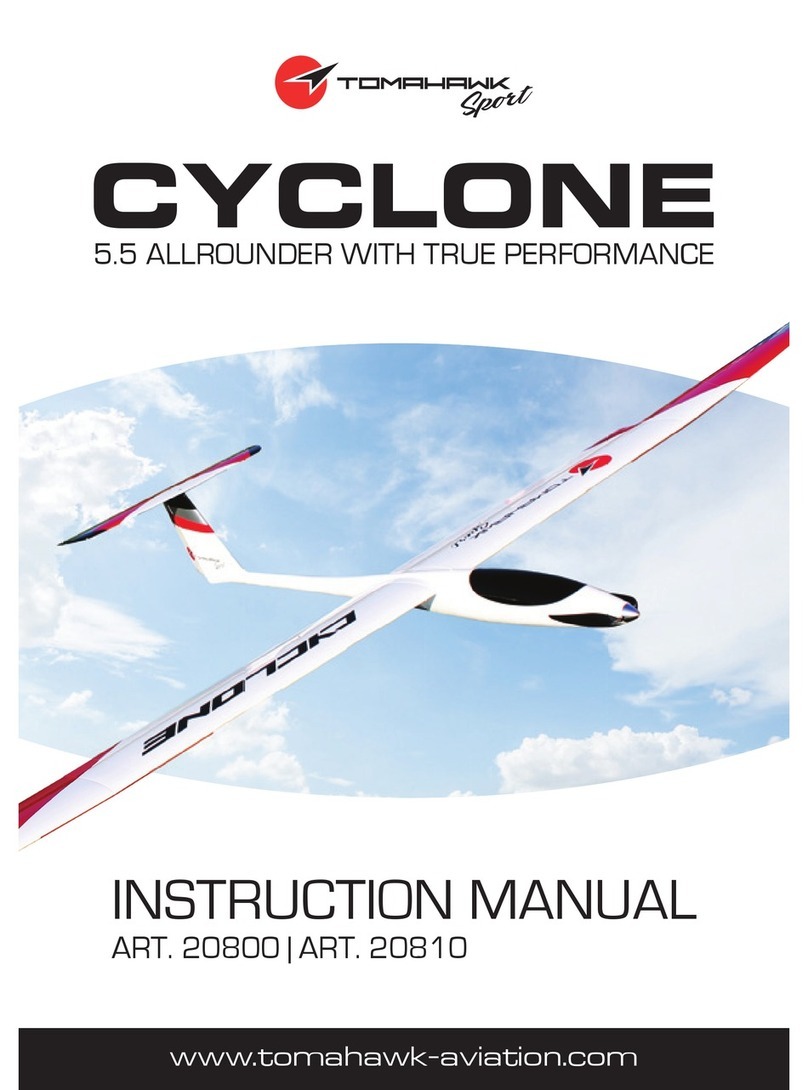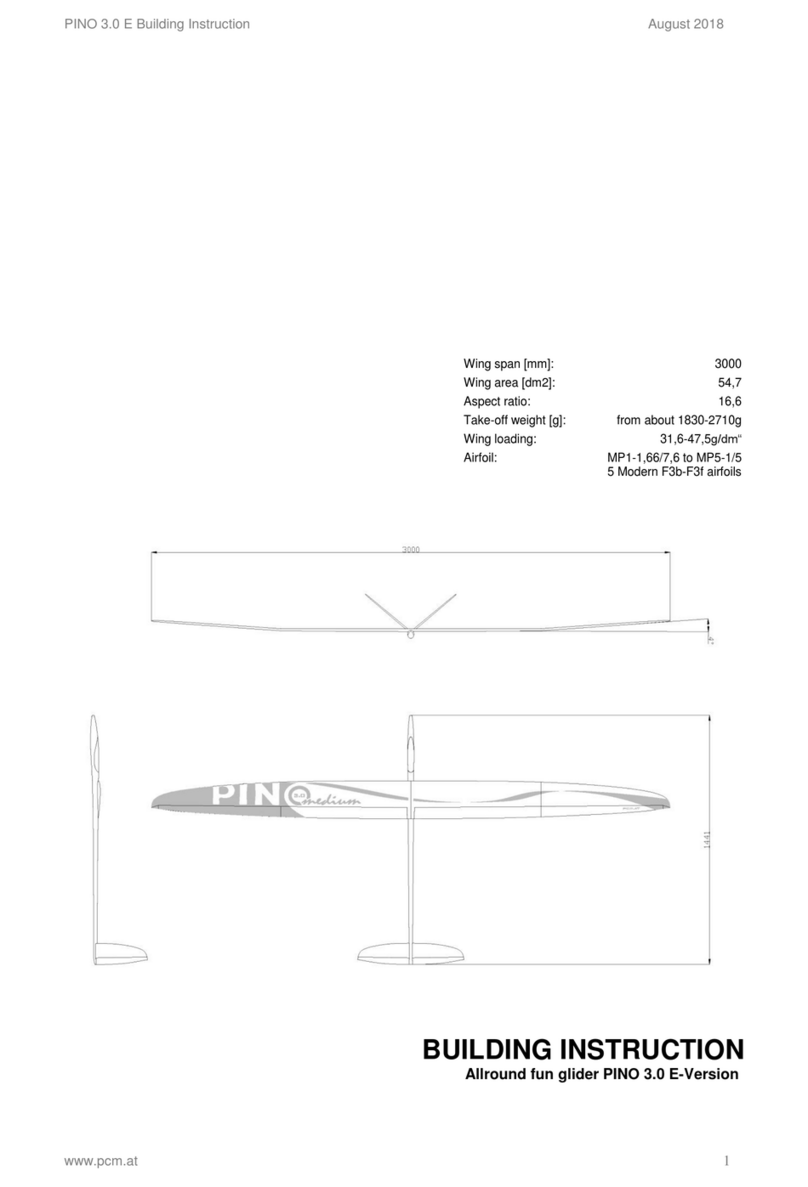Gin Gliders Safari Passenger User manual

Rev.1.0,29/04/2011
Owner’s Manual
Please read this manual before flying with the Safari Passenger for the first
time.
GinGlidersInc.
285-1Galdam-Ri,Mohyun-Myun,Yongin-City,Kyunggi-Do,Korea
www.gingliders.com, gin@gingliders.com

2
Thank You…
Thank you for choosing the Safari Passenger harness. We are confident that this harness will
provide you with enhanced comfort, control, performance and fun in flight. This manual contains
all the information you need to set up, trim, fly and maintain your harness. A thorough
knowledgeofyourequipmentwillkeepyousafeand enableyoutomaximizeyourfullpotential.
Pleasepasson this manualtothe new owner if you do resellyourharness.
HappyFlightsandSafeLandings,
TheGINTeam
Safety Notice
By the purchase of our equipment, you are responsible for being a certified paraglider
pilot and you accept all risks inherent with paragliding activities including injury and
death. Improper use or misuse of GIN equipment greatly increases these risks.
Neither Gin Gliders Inc nor the seller of GIN equipment shall be held liable for
personal or third party injuries or damages under any circumstances. If any aspect of
the use of our equipment remains unclear, please contact your local GIN reseller or
importer in your country.

3
Contents
ThankYou…..............................................................................................................................................2
SafetyNotice...........................................................................................................................................2
Contents ...............................................................................................................................3
1. Gin Gliders ........................................................................................................................4
2. Introducing the Safari Passenger......................................................................................5
FeaturesoftheSafari Passenger.............................................................................................................6
OptionalExtras........................................................................................................................................6
3. Before you fly...................................................................................................................8
Assembly .................................................................................................................................................8
Adjustments.............................................................................................................................................8
4. Flying with the Safari Passenger.......................................................................................9
Pre-flightchecks......................................................................................................................................9
Landingwith theSafari Passenger...........................................................................................................9
5. Miscellaneous..................................................................................................................10
Towing...................................................................................................................................................10
Flyingover water...................................................................................................................................10
Act responsiblyandhelp preserveyourflying sites .............................................................................10
6. Care, Maintenance and Repairs........................................................................................11
Environmentallyfriendlydisposal oftheharness................................................................................12
7. Technical Data.................................................................................................................13
Specification..........................................................................................................................................13
Certification...........................................................................................................................................13
Descriptionof material..........................................................................................................................13

4
1. Gin Gliders
Gin Gliders was formed in 1998 by paraglider designer and competition pilot Gin Seok Song and
histeamofengineers and testpilots.
Gin’s philosophy is simple: to design paragliding equipment that he and any other pilot love to
fly. This philosophy applies equally for a harness such as the Safari Passenger, as for the
renowned competition glider, the Boomerang. No product is released to the market without
Gin’s complete satisfaction. Gin Gliders produce a complete range of accessories and can
provide you with many useful items for flying which are all manufactured in Gin Gliders own
productionfacilitytoguarantee highestqualitystandards.
Gin has over 20 years’ experience of designing and manufacturing paragliders and is backed up
by an equally experienced team, both within the company in Korea and throughout a worldwide
network of distributors and dealers. The “GIN Team” has won the Paragliding World Cup overall
several times and has had countless other competition successes in World Cups, World and
National Championships. This high level of expertise provided by dedicated professionals
ensuresthat you get thebestpossible product supportandaftersalesservice.

5
2. Introducing the Safari Passenger
The Safari Passenger was developed by the R&D team of Gin Gliders to meet the needs of both
professional and leisure tandem pilots. The Safari Passenger was the harness used by GIN test
pilots during the development of the Safari tandem paraglider, Safari pilot harness and Yeti
tandemrescue.TheSafariPassenger is suitableforallkindsoftandempassengers.
The Safari Passenger can be flown with all types of paragliders unless the manufacturer of your
paraglider requires a specific harness to be used with his paraglider. Please refer to the manual
ofyourparaglidertofindout if this mightbethe case.
The Safari Passenger is simple, easy-to-use and lightweight. The overall geometry of the
harness is designed to make passengers feel secure and comfortable, even on longer flights.
The split legs design greatly aids ease of movement during take-off and landing, unlike
harnesseswith a seat plate.
The legs straps are secured with a rectangular thread-through buckle for extra security. The leg
and chest straps are integrated with a Safe-T buckle that prevents the passenger falling out of
theharness if thepilotforgets to fastenthelegstraps.
An airbag with air inlets on either side protects the bottom, and a mousse bag protects the
bottom and back. This combination offers the very best protection, the dual air inlets ensure
that the airbag is inflated in almost every direction, and even when not fully inflated, the
airbag offers some protection. The mousse bag offers additional protection, for example in the
case where the pilot’s harness has a seat board which may impact on the passenger’s back. The
mousse bag can, however, be removed for greater portability at the discretion of the pilot,
thoughwedonot recommend it.
The harness has sturdy fabric reinforcement attached under seat with Velcro for replacement
whenwornout.
The harness also features Velcro shoulder straps with safety loops for the secure attachment of
thepilot’sinstruments.

6
Features of the Safari Passenger
Components of the Safari Passenger:
-GINSOFT10foam mousse bag protector
-2carabiners
Back protection
The Safari Passenger is equipped with a combination of air bag and a GINSOFT10 10cm foam
mousse bag. The GINSOFT10 has multi-compartments and a dual layer structure. This offers
better shock absorptionbycontrolled escapingof theair fromthe foamin case of impact.
When the airbag is fully inflated, the airbag provides sufficient protection by itself. If there is
insufficient air in the airbag, for example during take-off, the GINSOFT10 provides
complementary protection which will reduce the energy of the impact as much as possible, but
itcannotcompletelyeliminate theriskofinjury.
The Safari passengerairbag harness withGINSOFT10backprotectoriscertified EN andLTF.
Storage/Pockets
TheSafariPassenger containsa large back pocket and 2 smallerpocketsoneither side, zippered
for security. The back pocket contains a compartment for a small radio and there is a hole for an
in-flightdrinks systemorahandheld microphone/speaker cable.
Optional Extras
Thefollowingitems are available asoptionalextras.
Tandem rescue bridle
The tandem rescue bridle can be used to connect the pilot/passenger to a rescue system, such
as the Yeti tandem rescue, which is installed in the pilot’s harness. Please contact your local
dealerfordetails.

7
Other Accessories
For up-to-date information on additional accessories, visit www.gingliders.com or contact your
localGINdealerorthedistributorinyourcountry.
Tandem Pilot harness
GIN Gliders is also producing the tandem pilot harness “Safari pilot”. You can see it here on this
picture.Pleasecontact your local GINdealer or thedistributor in yourcountry.

8
3. Before you fly
The Safari Passenger must be assembled by a suitably qualified paragliding professional, for
exampleyourinstructor.Thepilot should then adjusttheharnessfor comfort.
Assembly
The Safari Passenger is delivered with the back protection pre-installed. But when it is
necessary to assemble the harness by yourself, Gin Gliders recommend that assembly be
carried out as below. If there is any doubt whatsoever about this procedure, please seek
professionaladvicefromyourinstructor, GIN dealer or importer.
Back Protection
If you receive the GINSOFT10 back protection folded, then please let it lay open for several
hours before you install it into the harness. To install, open the zipper in the back protector
pocketandslide in the GINSOFT10.
Adjustments
TheSafariPassenger should be adjustedtosuityourphysiqueand flying style.
It isimportant toadjust itcorrectly toensure youcaneasily slideinto thesitting position after
takeoff.
Adjustments should ideally be tested by hanging in a simulator prior to the first flight.
Additionalfine-tuning can be doneduringyourfirstfewflights.
Checkthattheair inlets to theairbagareclearlyopenandunobstructed.
Pleasefollowthe following stepstoadjustyour harness:
Lateral straps
The lateral straps adjust the angle between the thighs and the back. This angle can be set
between 90° and 110°. Lengthening the straps increases the angle and vice-versa. The easiest
way to adjust them correctly is in a simulator. Remember that flying in the “supine position”,
which means leaning back, reduces the stability of the harness and increases the risk of
twistingafteran asymmetric deflation.
Shoulder straps
The optimum setting for the shoulder straps depends on the height of the pilot. Stand upright
with the chest/leg straps closed and symmetrically adjust the shoulder straps until they are
just tight. To loosen the shoulder straps, pull the narrow webbing loop that protrudes
backwardsfromthebuckleontheshoulder strap.
Chest strap
The adjustment of the chest strap controls the distance between the carabiners and affects the
handling and stability of the glider. Widening the distance between the carabiners increases
feedback from the wing and allows for easier weight shifting. Closing the strap gives you a

9
more stable feeling in turbulence but increases the risk of stable spiral and also the risk of
twisting!
We advise pilots of GIN paragliders to fly with a distance between the carabiners of
approximately42to50cm.
The chest strap may also be adjusted in flight according to the conditions; for example, it may
betightened in turbulentairand flownat a loosersetting in more stableorweakconditions.
4. Flying with the Safari Passenger
Pre-flight checks
Formaximumsafety,useacompleteandconsistentsystemofpre-flight checks and repeat the
samementalsequence every
flight.
Checkthat:
Thereisnovisible damage to theharness or carabiners thatcouldaffectitsairworthiness.
All buckles, belts, zips are securely fastened. Buckles should click into place as you close
them, and a gentle pull on the fastened buckle verifies this. Secure any zips after
fasteningthebuckles.Takeextracareinsnowy or sandy environments.
The paraglider is connected correctly to the spreader bars, and both carabiners on both
pilotandpassenger harnesses aresecuredbytheir locking mechanisms.
Allpocketsareclosedproperlyand any loose items are tieddownsafely.
Theairinletsoftheair bag are open.
Onemoretime!Youhaveclosed your leg andcheststraps before you take off!
Landing with the Safari Passenger
Before landing, slide your legs forward in the harness so that you adopt the standing position.
NEVER land in the seated position; it is very dangerous for your back even if you have back
protection. Standing up before landing is an active safety system, and is much more effective
thanthepassivesystemofbackprotection.

10
5. Miscellaneous
Towing
The Safari Passenger isn’t equipped with an extra system for towing. The tow release can be
connected to the main carabiners of the tandem spreader bar. The best way to attach a tow
release is to use a towing adapter, which slides over the lower ends of the risers of the
paraglider before attaching to the main carabiners. For further details, refer to the
documentation provided with your tow release or towing adaptor or ask a qualified towing
instructoratyour tow site.
Flying over water
The Safari Passenger is not recommended for the extreme manoeuvres. But in any case, for all
other flights over water, the back protection should be removed, due to the increased
possibility of drowningafterawater landing.
Act responsibly and help preserve your flying sites
Pleaseobserveall local rulesat the flying sites youuse. It is important not toendangerthe
preservation offlyingsites that areavital necessityto the enjoyment of our beautifulsport.

11
6. Care, Maintenance and Repairs
The materials used in the Safari passenger have been carefully selected for maximum durability.
Nevertheless, keeping your harness clean and airworthy will ensure a long period of continuous
safeoperation.
Maintenance
Avoiddraggingyour harness over roughor rocky ground.
UnnecessaryexposuretoUVrays,heat and humidityshouldbe always avoided.
Keepthefoldedharness in your rucksack when not in use.
Storeallyourequipment in a cool,dryplace,andnever put it away while damp or wet.
Keepyourharnessasclean as possiblebyregularly cleaning offdirt with a plasticbristled
brushand/oradamp cloth. If the harness getsexceptionallydirty,washitwithwater
andamildsoap. Make sure you first remove the entiresub-componentsforexample,
rescueparachuteetc.When you clean, don’tscrub the fabric insidetheAirbagwith a
brush(especially the back) since the fabric can bedamagedbyrubbing. Allowthe
harnesstodrynaturally in a well-ventilated area awayfrom direct sunlight.
If yourrescue parachute evergets wet(e.g. in awater landing)youmustseparate it from
theharness, dry it and repackitbeforeputting it backin its separateoutercontainer.
Afterahardlandingyoumust check your air bag protectionfordamage.A tear in the
airbag may renderit totallyineffective and preventitfromworking as protection.
Youmust have theairbagrepaired properly beforeuse.
The zipsandbuckles maybe occasionally lubricated with silicone spray,nomorethan once
ayear.
Inspection checklist
In addition to regular pre-flight checks, the Safari passenger should be inspected thoroughly,
normally every 2 years or 200 hours. Additional inspections should be performed after any
crash, bad landing or take off, or if there are any signs of damage or undue wear. Always seek
professionaladvicewheneverin doubt. The followingchecksshouldbecarried out:
Check all webbing, straps and buckles for wear and damage, especially the areas that are
noteasilyseen, such as theinside of the carabinerhook-inpoints.
All sewing must be intact and any anomalies attended to immediately to avoid
exacerbationoftheproblem.
Special attention should be paid to the rescue installation, particularly the elastic and
Velcroparts.
The main aluminium carabiners must be replaced at least every 5 years or after 500 hours,
whatever comes first. Impacts may create undetectable cracks that could result in
structuralfailure under continuousload.

12
Repair
The manufacturer or an approved specialist should carry out any repair that involves critical
partsoftheharness. This will ensurethat thecorrectmaterialsand repair techniquesareused.
Environmentally friendly disposal of the harness
When thisparagliding harness cannotbe usedanylongerafter anextendedperiod oflifetime,
thenyoumustensurethat it will bedisposedinanenvironmentally friendly way. Please
observe the existingregulations and lawsin yourcountry.

13
7. Technical Data
Specification
Size Onesize fitsall
Recommended Pilot Height(Cm) 160~190
Weight (with BackProtector) Kg 2.7
DistanceBetween Carabineers 36-48cm
Back Protector 10Cm Foam mousse bag:GINSOFT 10
CertifiedMax. Loadfor EN& LTF 120kg
Certification
SafariPassenger harness: EN 1651 <F91/09, Nr.EAPR-GZ-7396/11
Description of material
Fabric:
Outside:NYLONCODURA,420DHDN/OXFORD PU, CHARMEUSECONTRECOLLEE
Inside:OXFORD210DPU
Webbing:NYLON-6625mm/30mm
Buckle:T-LOCKSAFETYBUCKLE,SLIDEBUCKLE
Thread: P/F210D/9Bonded,P/F210D/4&210D/6BondedPOLYESTER
Every effort has been madeto ensure that the information in this manual is correct,
butpleaseremember that it hasbeenproducedfor guidance only.
This owner's manual is subject to changes without prior notice. Please check with
www.gingliders.com for the latest information regarding the Safari Passenger and
otherGINproducts.
Table of contents
Other Gin Gliders Aircraft manuals

Gin Gliders
Gin Gliders PEGASUS User manual
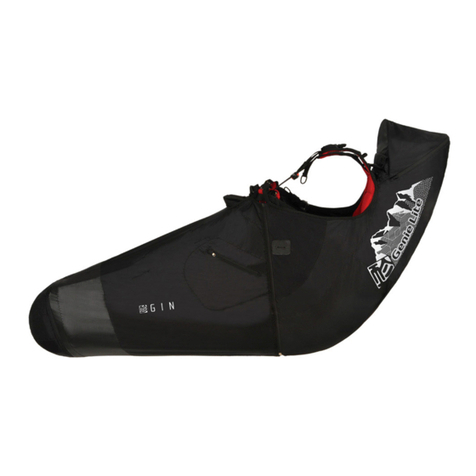
Gin Gliders
Gin Gliders Genie Lite 2 Series Manual
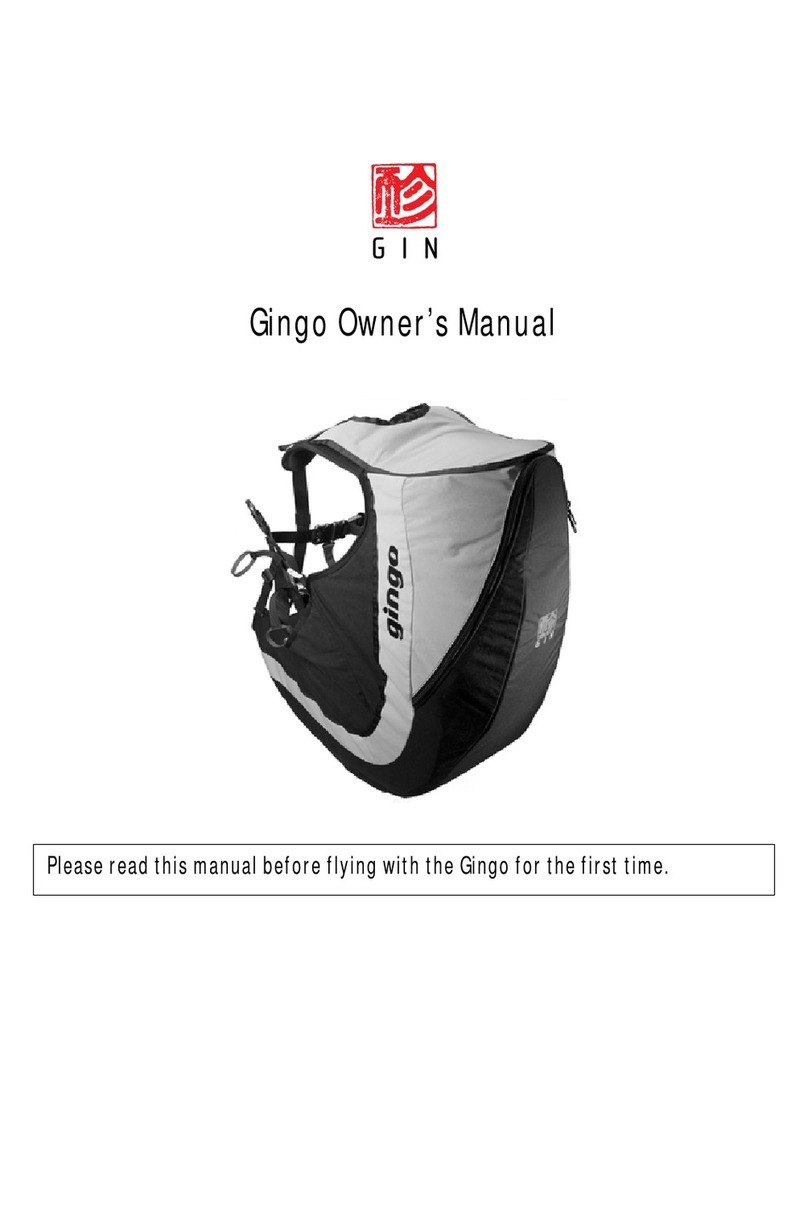
Gin Gliders
Gin Gliders Gingo User manual
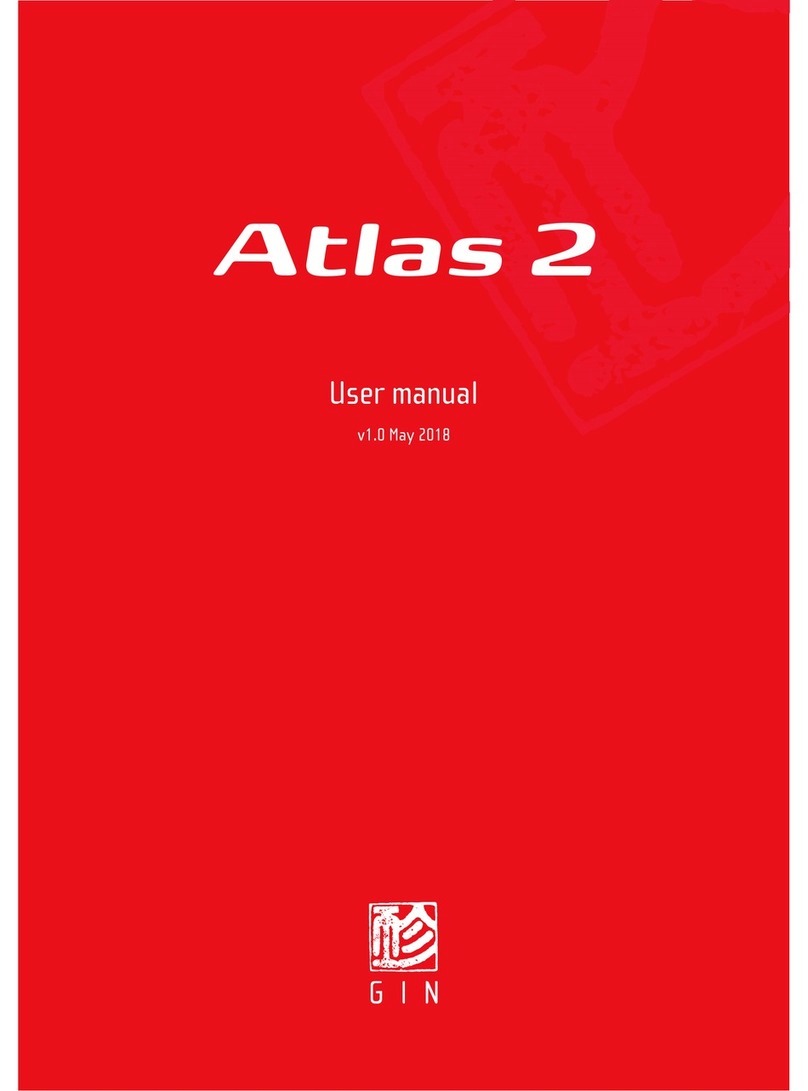
Gin Gliders
Gin Gliders Atlas 2 User manual

Gin Gliders
Gin Gliders Bolero 6 XXS User manual

Gin Gliders
Gin Gliders Explorer2 Dyneema Riser Administrator Guide
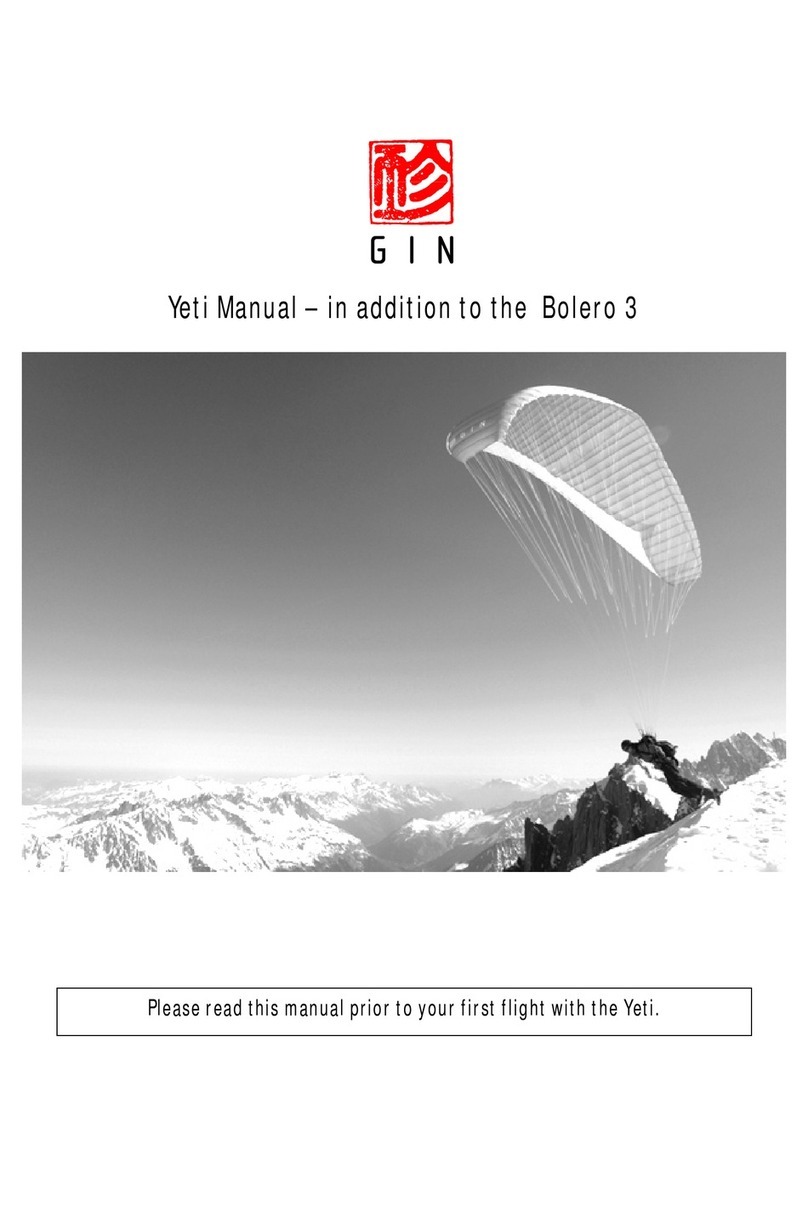
Gin Gliders
Gin Gliders Yeti 08 User manual
